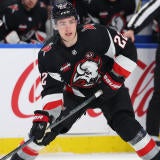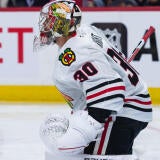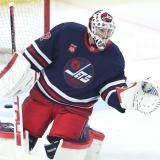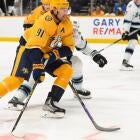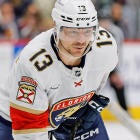Ice and Fire: Time for some bold predictions
When should you plan on drafting Connor McDavid this year? Should you be all in on the Panthers? Dan Pennucci gets you ready for the season with his initial Ice and Fire.
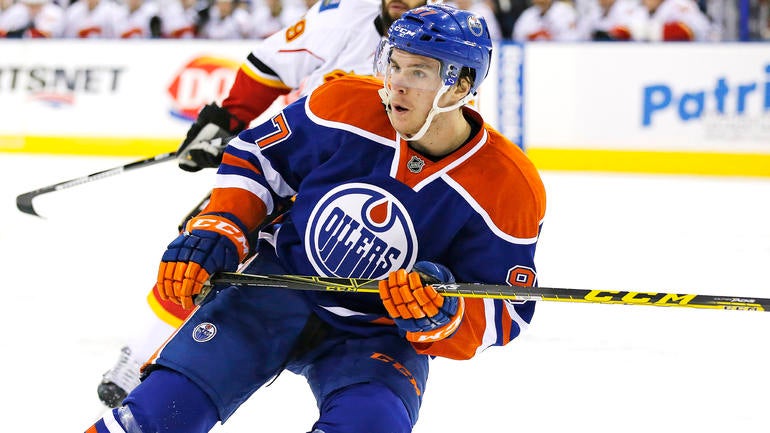
Early fall trumps all.
The weather has finally cooled, leaves are beginning to change and it's arguably the best time of the year for sports fans. The baseball playoffs are beginning, college and pro football are getting much more interesting and hockey makes its return. Four months of rumors, roster moves and news end and a renewed sense of hope for fan bases across North America rushes in.
Will Mike Babcock possibly be able to succeed in the circus known as Toronto? (The Blue Jays may give Babcock and the Leafs the rarest of opportunities in Toronto: a brief reprieve from the rabid Toronto media. Operative word there being "brief".)
What will Connor McDavid and Jack Eichel bring to their respective clubs? In the Oil Patch, it's hope. More hope for a team that has been living off hope for the last half-decade with nothing to show for it except a wait-until-next-year attitude. They'll keep waiting. In The City of Fires, the Sabres are infinitely closer to being a playoff team than Edmonton.
All these are tired storylines, albeit intriguing ones.
Bold Predictions: Columbus, Florida, Dallas and Winnipeg will be playoff teams.
Detroit, San Jose and Ottawa will struggle and be watching the playoffs.
East Final: Tampa Bay over Montreal
West Final: St. Louis over Minnesota
Stanley Cup: Tampa Bay
Conn Smythe: Ben Bishop
Hart Trophy: Ryan Getzlaf
Norris: Victor Hedman
Vezina: Braden Holtby
Richard: Steven Stamkos
Ross: Sidney Crosby
Calder: Jack Eichel
-- Phil Kessel will disappoint in Pittsburgh relative to his otherworldly expectations. He'll still have a good 35-40-plus goal season, but thoughts of him bagging 50-55 are a bit rich. Every March and April, hockey fans see Pittsburgh struggle, and every fall they're expected to be the 1984 Oilers reincarnate. Sidney Crosby will still be the league's top player, and a healthy Evgeni Malkin will challenge for the Art Ross Trophy (focus on the world healthy). Kessel will have a fine season, just not monumental and certainly not worthy of being the top winger selected in some drafts after Alex Ovechkin. You should go for Jakub Voracek or Vladimir Tarasenko over Kessel.
-- Back to Connor McDavid. Keeper leaguers need to pull the trigger on drafting McSavior early. Generational talent and all, be ready to pay a hefty price to get him. If your league has no restrictions on how long players can be kept, take him as quickly as you can. He won't be a monster this season, but you'll enjoy his presence on your team for years to come. Even in leagues with contracts and limits on keepers, get him. Those in re-draft leagues might want to wait on McDavid, but not too long as he'll likely be gone by the end of the third round.
-- Throughout the season, I will be rather bullish on the Florida Panthers. Jonathan Huberdeau is a budding star, and this may be one of the last seasons to grab him at a discounted price, ditto on man-child Aaron Ekblad. Nick Bjugstad is as an intriguing player to target in later rounds as anyone else. His talent level is ridiculous and he pocketed 24 goals last season despite missing the final 10 tilts. He started shooting more and also saw his shooting percentage rise three points from his first full season. Look for Bjugstad to make a larger jump this season on a team expected to challenge for a playoff spot. Those in very deep keeper leagues will want to take note of Vincent Trocheck.
Observations after several drafts
-- The forward pool is incredibly deep this year with so many talented players. In our Mock Draft (12 teams, 18 rounds) from last week revealed this, as it seemed there were myriad forwards available at the end of the draft who were skilled, talented and could contribute for owners in deep leagues. The likes of Tyler Ennis, Aleksander Barkov, Anders Lee, Marko Dano, Nail Yakupov and Mikael Granlund all went in the final two rounds with Paul Stastny (possible center for Vladimir Tarasenko), Brayden Schenn, and Jonathan Drouin going in the 16th.
More skilled players are entering the league as the rules implemented following the 2004-05 lockout have created what seems to be a generation of skilled players relying less on the "good-ole Canadian boy" makeup. Forwards available at the end of your draft aren't guaranteed to be consistent, but the upside at the back ends of drafts seems to be much higher than it has been in previous years.
-- Conversely, defensemen seem to fall off a cliff after the likes of Sami Vatanen and John Klingberg. True there are some values to be had with the likes of Jacob Trouba, Tyler Myers, Justin Schultz and Alex Goligoski, but the elite double-digit goal scoring defenders seem to be dwindling a bit. I've always been a bit biased toward high-end defenders, but a 40-point defender who can challenge double-digit goals is worth more than a 50-55 forward this season. Other seasons too, but the dropoff on defense this season just feels more precipitous.
-- When debating over two players, follow the shots on goal. While I'm not a fierce advocate of Corsi, more shots on goal tend to lead to more points. Focus on a player's shooting percentage year in and year to see where the aberration, if any, may lie.
Expert League draft
On Sunday night I participated in an expert league draft with other industry writers. It's a yearly 11-team re-draft league with standard rotisserie scoring and three positional forwards each rather than the generic forward designation to go along with two goalies, one forward spot and five defensemen. Of my drafts this past week, I felt the most in control of my team with this one, felt less reactionary based on the draft room. The computer bestowed on me the first pick with which I took Alexander Ovechkin. Points might not match Sidney Crosby or Jamie Benn at the end of the season, but goals trump all, and in a league that counts shots on goal, it's an easy pick.
As readers will know, the only downside to having the first pick is the wait. Waiting and watching all the players you had queued up go, hoping beyond hope that somehow will drop to you. I bring up the waiting and the watching because I did something I almost never do when I have corner picks, especially in rounds two and three: back-to-back goalies. Jonathan Quick (2.12) and Braden Holtby (3.1) were snagged. Carey Price (1.4) and Henrik Lundqvist (1.8) went in the first while Pekka Rinne and Tuukka Rask (2.6 and 2.8) meant the elite goalies were dwindling. I gambled and realized I'd be able to draft more forwards later and fill in defenders here and there.
By doing so, I was able to focus more on who I wanted rather than having the draft and my draft position dictate who my goalies would be, meaning I didn't have to get the last good option on the board before any starting goalie would do when a bevy of talent was around. I didn't want to end up with a timeshare (e.g. Jake Allen or Brian Elliott) as a starter and I wanted to steer away from weaker teams, such as New Jersey, Arizona, Carolina etc. One caveat: Cory Schneider is a solid play in Roto leagues on a lackluster New Jersey team. You'll have to get wins elsewhere, but his ratios should be in the top 10 among starting goalies with a ridiculously heavy workload.
With corner picks, I would have loved to get my hands on either P.K. Subban (2.4) or Erik Karlsson (1.9), but that dream was the stuff of pipes. I wasn't about to reach for Dustin Byfuglien, Shea Weber or Roman Josi at 2.11 and 3.1, but Ryan Johansen and Logan Couture looked awfully tempting, as did Nathan MacKinnon and Max Pacioretty. Knowing how deep the forward pool was, I took my chances.
I've had drafts before where a slavish adherence to a strategy going into it caused me to miss out on players to fill a positional need. Filling a need isn't the worst thing, but it can cause you to reach out of necessity. Adapting to what is going on in draft room is a challenge; the desperation of a position run, reaching for the player you want because he might not be there when your turn comes around again, settling for an older reliable veteran over a player oozing with upside all the while knowing the vet was the right pick but hating it anyway.
As the draft went on, I saw some goalies go a bit early just to fill a need. I had my doubts about going goalie-goalie in Rounds 2 and 3, but what transpired was fine by me. Rounds 4 and 5 granted me Shea Weber and Tyler Johnson while James van Riemsdyk and Sean Monahan were added in Rounds 6 and 7. The rest of my top 10 is as follows: Aaron Ekblad (8.11) John Klingberg (9.1) and Jeff Carter (10.11).
This by no means is a harbinger of the season ahead because there are a boatload of savvy owners in this league, and many picks were ripped away from me just as my draft slot approached. I simply like my team more in this league than I have in an industry draft in some time. There are some loaded teams in this league and it will be fun to play it out.
I had the good fortune (misfortune at times) of picking both in front of and behind RotoWire maven Janet Eagleson, a situation which saw me lose out on Johnny Gaudreau (6.10), Jaden Schwartz (8.10) and Jonathan Huberdeau (10.10). Apparently, I returned the favor for her with Sami Vatanen (11.1), Holtby and other players she had her eye on such as Klingberg and Adam Henrique (go Spits go) at the end of the 18th.



